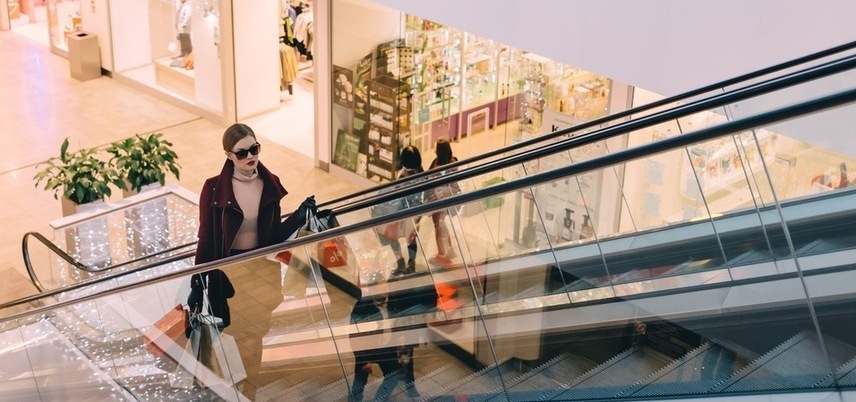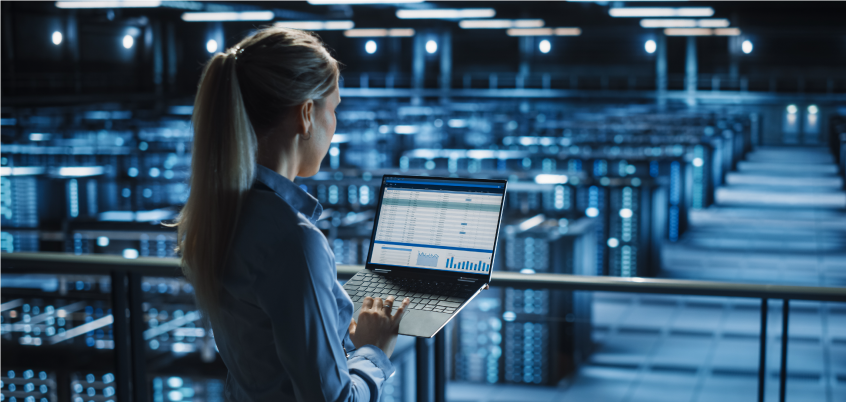New Technologies Help Retailers Improve the Customer Experience

Introduction
Retail has always been a challenging business. Today, more than ever consumers want the latest products at the best price, with quality service, and a quick response when they want more information. New apps and online stores make it simple to comparison shop on-demand.
To meet evolving customer expectations, retailers are striving to create new and personalized shopping experiences. As a result, retailers are employing leading-edge technologies to customize their marketing, recommend appropriate products for individuals based on past purchases, and quickly react to emerging trends and potential issues.
By collecting detailed information about customers and every brand engagement experienced in-store, online, or via mobile app, retailers are better equipped to anticipate customer preferences and shopping practices.
Once intelligence is derived from the data, and retailers “know” their customers better, additional technologies help retailers interact with them in the most appropriate way. Through email, text, and social channels, retailers can reach out across multiple touchpoints to pique and nurture customer-specific interests. We have all seen ads on our social channels (featuring a pair of shoes, for example) that we may have clicked on in our online travels. By recognizing customers through their mobile devices, retailers can also display information as a customer walks by an interactive display. Alternatively, a retailer might flash an alert on a terminal when a customer is paying, so a clerk can share any specials that apply specifically to that customer.
The new technologies being used by retailers help support:
- Internal activities (e.g., back-office applications, ecommerce sites, analytics and targeted marketing, and social media)
- In-store interactions with customers (e.g., mobile apps, immersive environments, payment systems, and interactive marketing).
To collect the data, share it between relevant applications, and take actions, retailers need a robust communications and IT infrastructure. The infrastructure must be highly available, while delivering the requisite performance and security. It must also offer the flexibility to meet variable demands (e.g., seasonal changes or spikes due to marketing campaigns or social media), and must scale to support new retail technologies as they emerge. This paper looks at some of the innovative applications of new technologies being deployed by retailers that are impacting communications and IT infrastructures.
Location, Location, Location
For years, leading retailers have deployed new technologies to try to increase sales, improve customer service, and strengthen loyalty. Now, as competition grows and pressure builds to make the shopping experience more enjoyable, organizations must make use of the most cutting-edge technologies available to be successful.
Some of these innovations are used to improve the experience once customers are in a store. Others are intended to help improve the online shopping experience. All must make use of volumes of data (i.e., inventory information, pricing, customer preferences, and loyalty program details) maintained on centralized back-office systems. This information and third-party sources of information such as social media streams must be constantly searched and analyzed. The information found and derived from these actions must then be made accessible to front-end systems in individual stores and on websites. It must also be shared with customers’ mobile apps.
Successful use of all new technologies is dependent on the communications infrastructure in place, across a distributed retail enterprise. For retailers to operate effectively in today’s connected economy, a network of dedicated, broadband, and mobile connections are required to instantly deliver information to-and-from a cloud or data center environment across multiple business locations. From business support systems to customer-facing employees, systems, and mobile apps, each store needs to be able to make use of real-time data.
A prime example is the use of beacons. Innovative use of beacons can include sensing potential customers and then pinging their mobile phones, sending a relevant offer to turn a passerby into a visiting customer. Beacons placed throughout a store can also provide detailed location information about where customers go and how long they stay in a particular spot.
Beacons can be used to improve customer service, enhance the benefits of loyalty programs, and increase revenue through targeted marketing. To realize any of these benefits of using beacons requires very timely sharing of information between the back-office systems that manage facility and customer information and the front-end systems and apps used by show floor personnel and customers. Beacons allow retailers to:
Strengthen customer loyalty: Once a beacon detects that a customer has entered a store, a retailer can retrieve information from a loyalty program database and details of previous purchases. Information from such databases can be used as a customer travels to different parts of a store. For example, if the customer has made multiple purchases in the electronics section over the past year, the store could push notices about today’s electronics specials to his or her mobile phone.
Increase revenue through customized and targeted marketing messages: Retailers have little time to engage with customers when they visit a store. Making this engagement automated and personal is the key to achieving maximum results. With beacon-provided location information tied into a database about a guest’s likes and past on-site purchases, a retailer could send personalized offers as a customer roams a facility. If the customer lingers near a particular merchandise display, a reminder that the items in that section are on sale could be delivered instantly to his or her mobile phone.
Use analytics to gain customer insights: The information gathered from beacons can be used for many purposes. For example, a retailer could use the information to determine dwell times, measuring how much time customers spend in different parts of a store. This information can also be used to determine the effectiveness of different product displays or signage. Retailers can also measure the concentration of customers in different sections of a store and direct staff to the locations that need the most personal assistance.
Additional Technologies on the Horizon
There are several other areas where retailers can improve their appeal to customers and differentiate their services from competitors. Within stores, these technologies include:
Pokémon GO technology: Some retailers are already experimenting with augmented reality (AR) apps. A new application is to use the underlying technology that powered the wildly popular Pokémon GO game. The game’s technology could be used by retailers to create a direct link between mobile activity and brick-and-mortar boots on the ground activity— go here, collect reward.
One could easily imagine using the technology to “lure” customers to a particular store by offering incentives such as product discounts. A different use of the technology would be to guide customers to a particular section of the store based on their previous shopping patterns.
Any AR application requires tight integration and information sharing between the user’s mobile phone app and back-end systems or third-party applications or databases. As such, these applications require WiFi, network, and communication infrastructures to be resilient, highly available, and fast.
Augmented reality in stores: Retailers are also turning to AR to let customers “try on” clothes and cosmetics. To that end, AR applications will increasingly be used in retail environments to give consumers product information and help them interact with brands.
Interactive displays throughout a store: Using location information derived from a beacon and the user’s phone, a retailer could selectively change displays as a customer walks through the store. The information provided by back-end systems and displayed by front-end systems on-premises could be either promotional or informative.
Image recognition displays: Many of the technology examples cited in this paper require that the customer share information, be a member of a loyalty program, or make use of a mobile phone app while in a store. That’s fine for repeat customers and those who favor a particular retailer’s brand. To reach new customers and those who are not members of loyalty programs, retailers can use other techniques. A good example is placing sophisticated displays throughout a store that use image recognition techniques to help identify a person’s age and gender. With this data, images and information can be pre-selected by marketing for different groups to be presented as certain individuals walk by particular displays.
Improved Online Experience
There are also efforts underway in many retail organizations to use different technologies to enhance the online experience and provide new services through eCommerce sites. They include:
Personalized fitting online or via app: One of the biggest problems with online shopping is that there is a high return rate due to customers not happy with the way clothing fits. About one-third of all online purchases are returned, and for apparel the return rate is closer to 40 percent.
This is driving retailers to look for a type of virtual tailor technology that can match specific clothing items to actual body measurements. Using this technology, a customer would enter body measurements to create an online clothing mannequin that accurately reflects the person’s own size and shape. This is the approach taken by Metail. When shopping for clothing online, a customer can use her personal clothing mannequin to see how potential purchases would look on her body.
Today, this approach is the online equivalent of bringing clothes into a dressing room to get a better idea of fit and style. In the future, this technology could be supplemented with other services. For instance, a retailer might add a recommendation engine or chatbot to offer advice on outfit choices or clothing combinations. Or a retailer might offer style services to help people match the look of a celebrity or someone else they have seen on a magazine or on TV.
Sentiment analysis of social media streams: Retailers must constantly monitor social media sites, mine information, and gauge customer sentiment. By going beyond simply looking for mentions of a store’s name or searching for specific hashtags, organizations could benefit from the application of cognitive technologies that use natural language processing and artificial intelligence to try to determine true customer sentiment in social media streams.
Chatbots and virtual assistants: Taking personalized interactions to a new level, retailers could take advantage of the developments in chatbot technology that provide human-like interpretation of customer questions and automatic replies.
Chatbots could be deployed to act as virtual assistants, answering customer questions on websites, in social media streams, or when they call into a service center. Additionally, chatbots could be used to enhance the usefulness of in-store kiosks.
In these roles, chatbots can assist guests with simple questions and requests, freeing up staff to devote more of their attention to time-sensitive, critical, and complicated tasks. And chatbots could be available to customers around the clock, helping satisfy 24x7 customer cravings.
Retail everywhere: No longer confined to traditional stores, retail is increasingly ubiquitous. Transactions are becoming ever easier using mobile payments and automated subscriptions for regularly consumed goods. “Retail everywhere” is becoming possible as a result of a convergence of trends, such as increasing rates of smartphone ownership and the growth of the Internet of Things (e.g., like Amazon Dash Buttons). The idea is to leverage digital connections among objects and consumers’ desire for convenience to make shopping easy.
Simplifying the shopping experience in this way requires tight integration of multiple back-office systems. Letting a customer simply push a button or click once to order a product would require a quick look up of the customer’s address, payment method, and inventory information.
What’s Needed?
These new technologies will enable improved customer experiences, resulting in higher loyalty and greater insight into and control over which products to offer. Most applications of these new technologies rely on the fast, secure, and always-available sharing of data between back-office systems and front-end applications accessed by in-store store staff or mobile apps used by customers when visiting a store or website.
To support these emerging technologies, retail organizations need a modern communications infrastructure. A network that delivers the performance, capacity, availability, and security to meet the demands of today’s back-office, marketing, and customer loyalty applications, as well as to enable a highly interactive in-store and website experience is essential.
In particular, retail organizations need high-performance, business-class links between stores, headquarters, and stores to cloud-based systems. There is also a need for in-store connectivity, such as WiFi and Internet to support ecommerce and various employee and customer activities such as mobile apps, comparative shopping and social networking.
To meet evolving customer expectations, retailers are striving to create new and personalized shopping experiences.
Locked Content
Click on the button below to get access
Unlock NowOr sign in to access all content on Comcast Business Community
Learn how Comcast Business can help
keep you ready for what's next.











